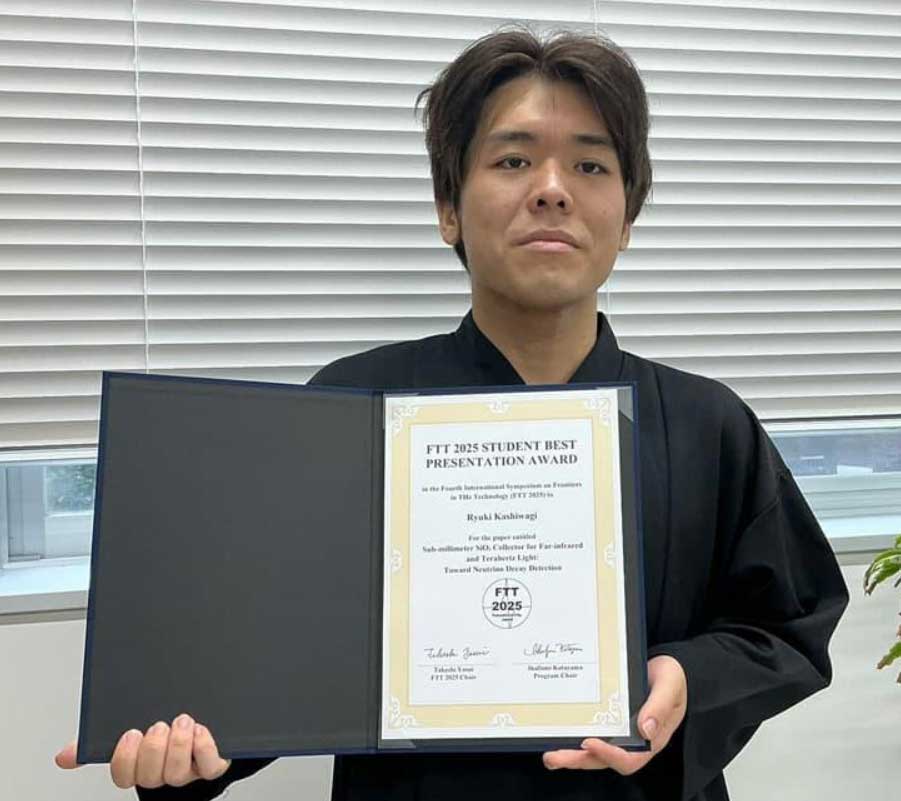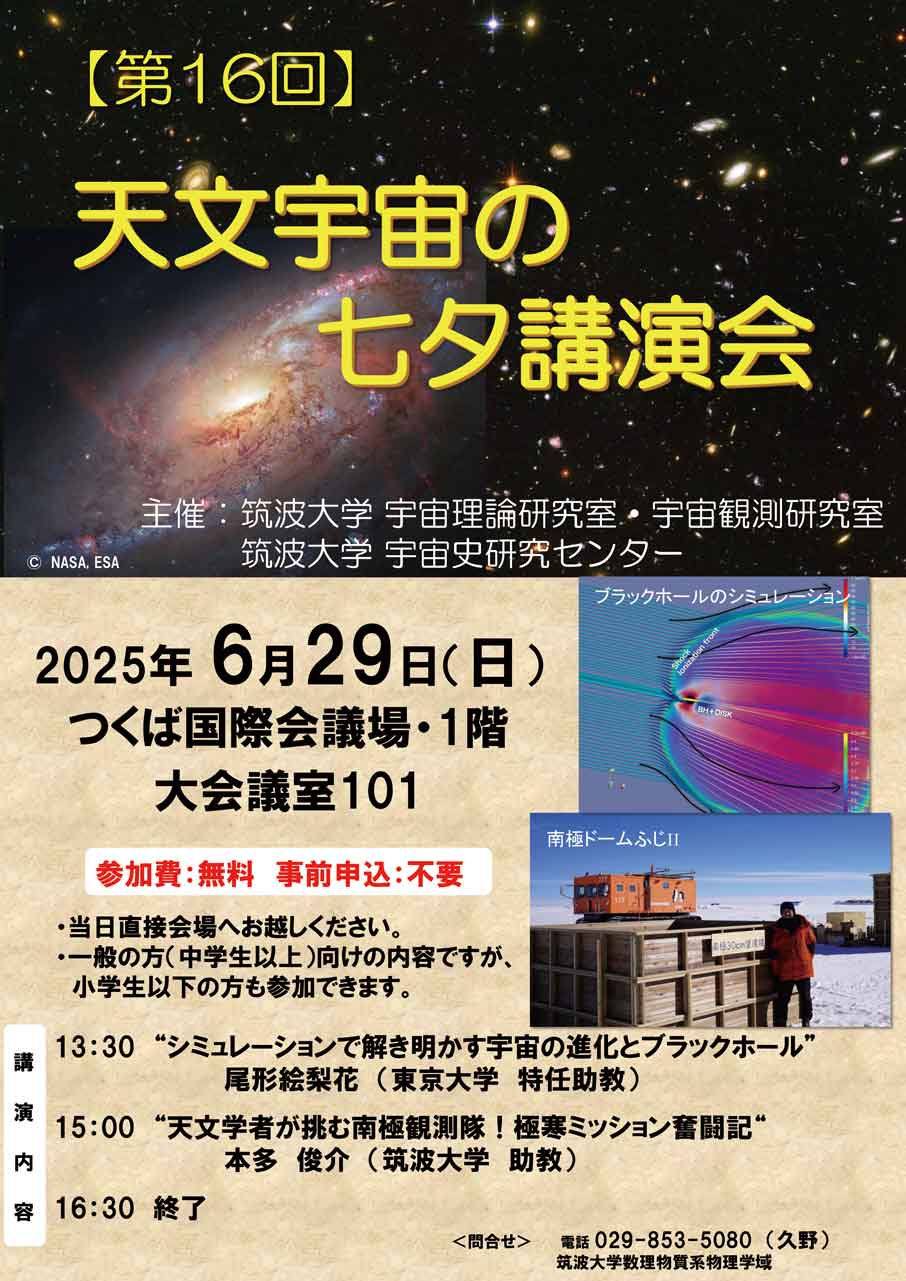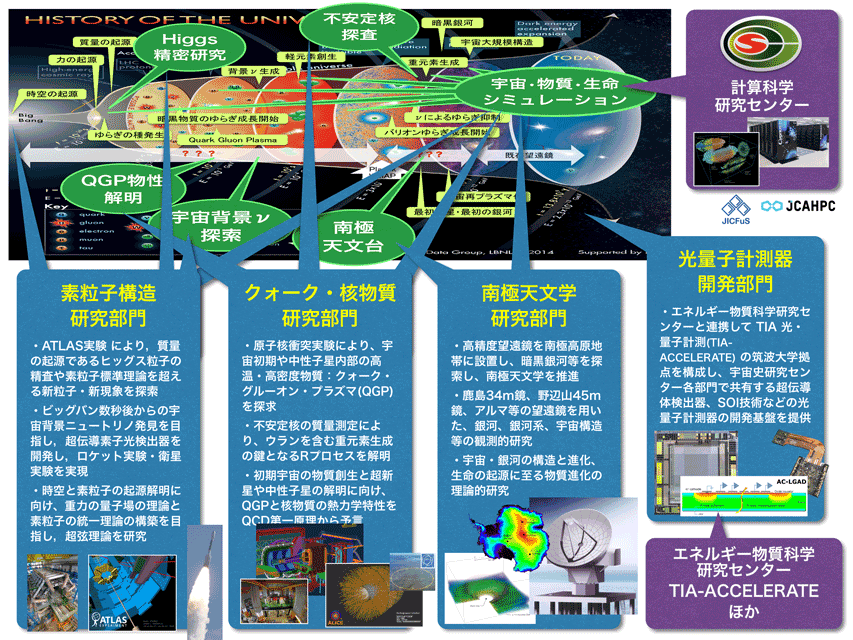Toward clarification of the History of the Universe
Why our Universe was bone and how it developed into the present state? Since its birth at the Big Bang, the Universe has experienced various drastic events. Because the Universe is not a stable object, we have to understand and explain the present state as a consequence of dynamical processes the Universe has experienced. Though many events in the History of the Universe have been clarified, many pieces are still missing to understand our Universe today.
Tomonaga Center for the History of the Universe (TCHoU) was founded in October 2017 as a research center at the University of Tsukuba. The mission of the Center is to clarify the genesis of the Universe as well as the origin of matter and life and to construct an integrated view of the History of the Universe, through international and interdisciplinary collaboration of particle, nuclear, and astrophysics as well as resonant cooperation of experimental and theoretical approaches.
Toward this goal, the center has established the following four research divisions:
- Division of Antarctic Astronomy
- Division of Elementary Particles
- Division of Quark Nuclear Matters
- Division of Photon and Particle Detectors
Please visit
♠
[About the Center] for an overview of the Center.
♦
[Projects] for the research projects of the Center.
♥
[Organization] for the organization and members of the Center.
♣
[Materials] for reports and introductory materials.
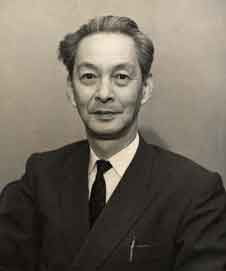 The name Tomonaga Center comes from Dr. Sin-Itiro Tomonaga, the second Nobel Laureate from Japan, who made fundamental contributions in constructing relativistic quantum field theories, the renormalization theory, theory of collective motions, etc. and also a founder of the physics institute at Tsukuba.
The name Tomonaga Center comes from Dr. Sin-Itiro Tomonaga, the second Nobel Laureate from Japan, who made fundamental contributions in constructing relativistic quantum field theories, the renormalization theory, theory of collective motions, etc. and also a founder of the physics institute at Tsukuba.
Visit Tomonaga Memorial Room, Univ. Tsukuba and Tomonaga Exibition at the University of Tsukuba Gallery for more information about Dr. Tomonaga.
(Photo: Tomonaga Memorial Room)
What's new
- 2026/01/19 HoU seminar
We hold a HoU Seminar in conjunction with the intensive lecture to be given by Professor Tamura from Tohoku University on January 19-20 (Monday-Tuesday).
- Date: Jan. 19, 2026 (Fri) 16:00-17:00
- Venue: B118, Natural Science Bldg., Univ. Tsukuba
- Speaker: Prof. Hirokazu Tamura (Tohoku Univ.)
- Title: "Nuclear Physics Deepened by Hypernuclei: Quark Degrees of Freedom Inside Neutron Stars and Nuclei"
- Through the study of hypernuclei, it is expected that we can understand atomic nuclei from the quark level using strangeness as a probe, thereby connecting and integrating hadron physics with nucleonic nuclear physics. From this perspective, research is being conducted on baryon-baryon interactions, high-density nuclear matter (inside neutron stars), and quark degrees of freedom within nuclei using hypernuclei and hyperons. This seminar provides an overview of the significance, current status, and future of such research, and discusses how hypernuclei can deepen our understanding of nuclear physics.
Contact: Prof. S. Esumi
- 2025/12/19 HoU seminar
- Date: Dec. 19, 2025 (Fri) 13:45-15:00
- Venue: B118, Natural Science Bldg., Univ. Tsukuba
- Speaker: Asso.Prof. Katsuro Nakamura (IPNS, KEK)
- Title: "Belle II Experiment"
- The Belle II experiment aims to discover new physics beyond the Standard Model by performing precision measurements of the decay processes of B mesons and other particles, using the world’s highest-luminosity electron–positron collider, SuperKEKB (KEK in Tsukuba). Since the start of physics data-taking in 2019, the experiment has steadily accumulated data in step with improvements in accelerator performance, already achieving several results that surpass those of its predecessors. Belle II is now entering a phase in which it seeks new physics discoveries while pioneering unprecedented levels of measurement sensitivity. Moreover, to achieve further significant improvements in experimental precision, a major upgrade of both the accelerator and the detector is being planned for the long shutdown period scheduled to begin in 2032.
In this seminar, I will provide an overview of the role of the Belle II experiment in particle physics, highlight its latest key results, and discuss future upgrade plans.
Contact: Prof. F. Ukegawa
- 2025/12/16 2nd TCHoU Research Member Meeting / Activity and Achievement Reports
The meeting serves as a forum for constituent members to deliberate on the center's current activities and future policies. It also aims to facilitate the mutual sharing of research topics and the latest achievements across various fields, fostering free discussions and exchanges of opinions on the potential for interdisciplinary research. We hope participants to promote interaction among the divisions through lively discussions. Please note that the part following the overall report and deliberation by the center director will be open to participants beyond the center's constituent members.
Presentations are in Japanese.
- Date: 16 Dec (Tue)
- 9:00-10:00 Research Member Meeting, 10:30-16:30 Activity and Achievement Reports
- Venue: Univ. of Tsukuba, Natural Science Bldg. B114 + Online (Zoom hybrid)
- Program:
09:00- UKEGAWA Fumihiko TCHoU general report 10:00- coffee Presentations are open to the public from this point forward. 10:30- KANAYA Kazuyuki Search for the critical point in spin systems and heavy-quark-QCD using the Lee-Yang Zero Ratio method 11:00- SATO Yuma Characteristic of Prototype 850-GHz LEKID Arrays for Terahertz Astronomy 11:30- lunch 13:00- NONAKA Toshihiro Exploring QCD phase structure with beam energy scan experiment 13:30- HORIE Shu Star forming gas clumps in simulated disk galaxies 14:00- coffee 14:30- YANO Asahi Present and future mass measurement methods of the Rare-RI Ring 15:00- HORIKOSHI Issei Development and Performance Evaluation of the Low Power Consumption, Fast-Response ASICs for Multi-Channel Readout of AC-LGADs 15:30- MURAYAMA Yua Research on improving the radiation tolerance of LGAD 16: 00- KUNO Nario Closing remark
Contact: Prof. S. Esumi
- 2025/11/13 2025 Campus Tour conducted at TCHoU
On Thursday, November 13, 2025, we conducted the 2025 Campus Tour for high school students. On the day of the event, students first attended a mini-lecture, followed by a tour of the University Hall Gallery.
The participants this time were 18 students and 1 teacher from Omiya Kaisei High School, who experienced the learning environment and campus atmosphere of our university through tours and lectures. We would like to thank everyone who participated.
- 2025/11/13 Takumi Omori received the Student Excellent Presentation Award at JPS annual meeting
Mr. Takumi Omori, a second-year doctoral student under the supervision of Assi.Prof. Takashi Iida from the Division of Elementary Particles, received the Student Excellent Presentation Award at the 80th Annual Meeting of the Physical Society of Japan, held from September 16 to 19 at Hiroshima University’s Higashi-Hiroshima Campus. This marks Mr. Omori's third consecutive year receiving this award.
16aEK203-2: Takumi Omori "Double Beta Decay Search for 160Gd by PIKACHU Experiment (XIV) -The analysis of the Phase 1 data-"
- 2025/10/20 Ryuki Kashiwagi received the Student Best Presentation Award at FTT2025
Mr. Ryuki Kashiwagi, a doctoral student under the supervision of Asso.Prof. Yuji Takeuchi and Assi.Prof. Takashi Iida from the Division of Elementary Particles, received the Student Best Presentation Award at The 4th International Symposium on Frontiers in Terahertz Technology (FTT2025), held at Tokushima University from October 15 to 17.
P-FTT-04: Ryuki Kashiwagi "Sub-millimeter SiO₂ Collector for Far-infrared and Terahertz Light: Toward Neutrino Decay Detection"
- 2025/09/05 Press Release "Discovery of Radiation-Dependent Luminescence in Eu-Doped CaF2 Crystals"
A joint research team led by Assistant Professor Takashi Iida of TCHoU has issued a press release regarding the discovery of luminescence properties in Eu-doped CaF2 crystals that vary depending on the type of radiation.
Scintillators are materials that convert the energy of radiation into visible light. In this study, the team made the world’s first observation that Europium (Eu)-doped CaF2 crystals emit a greater proportion of long-wavelength light under α-particle irradiation than under X-ray irradiation. This finding indicates that radiation types may be distinguished by analyzing emission wavelengths, opening new avenues for the development of advanced radiation detection technologies based on scintillators.
Published in Scientific Reports, "Emission Characteristics of Eu2+ and Eu3+ under X-Ray and Alpha Irradiation in Eu-Doped CaF2 Crystals", DOI: 10.1038/s41598-025-17570-5
For more details, see the press release article and the web announcement of the Univ. of Tsukuba.
- 2025/07/08 1st TCHoU Research Member Meeting / Activity and Achievement Reports
The meeting serves as a forum for constituent members to deliberate on the center's current activities and future policies. It also aims to facilitate the mutual sharing of research topics and the latest achievements across various fields, fostering free discussions and exchanges of opinions on the potential for interdisciplinary research. We hope participants to promote interaction among the divisions through lively discussions. Please note that the part following the overall report and deliberation by the center director will be open to participants beyond the center's constituent members.
Presentations are in Japanese.
- Date: 08 Jul (Tue)
- 9:45-10:30 Research Member Meeting, 10:30-16:30 Activity and Achievement Reports
- Venue: Univ. of Tsukuba, Natural Science Bldg. B114 + Online (Zoom hybrid)
- https://us06web.zoom.us/j/86777768210?pwd=HrYWgPz66QhetDfXxluiYYDfbig5jg.1
- Program:
- Click on the title for the presentation slide.
Contact: Prof. Y. Takeuchi
- 2025/07/01-02 KEK Detector R&D Platform "Silicon Detector" meeting
The KEK Detector R&D Platform "Silicon Detector" meeting will be held at the University of Tsukuba from Tuesday, July 1 to Wednesday, July 2, 2025. The goal of this workshop is to promote the activities of the platform by openly discussing current and developing detectors, detectors using new materials, advances and challenges in related technologies, and information sharing on development environments and facilities. This workshop will particularly focus on readout electronics, specifically ASICs and FPGAs, including specifications required in experiments in particle physics and related fields.
- Date: Tuesday afternoon, July 1 – Early afternoon, Wednesday, July 2
- Venue: Special Conference Room in the University Hall, University of Tsukuba
- Organizers: KEK ITDC Detector R&D Platform (semiconductor working group)
- Co-organizers:Division of Photon and Particle Detectors, Tomonaga Center for the History of Universe, University of Tsukuba
- Program: https://kds.kek.jp/event/55431/ (to be updated)
- Registration: Please register via the URL above (Deadline: Monday, June 23).
- Participation Fee: Free
Contact: Assi.Prof. S. Hirose
- 2025/06/29 Tanabata Lecture of Astronomy
Lectures by astronomers will be held near Tanabata Day. The state-of-the-art research content will be explained in an easy-to-understand manner to the general public. (in Japanese)
Click on the poster for details.
- Date: 29 June (Sunday) 13:30-16:30
- Venue: Tsukuba International Congress Center EPOCHAL, Conference room 101
- Target: General public (junior high school students and above)
- Participation fee: Free
- Program
13:30 Erika Ogata (Univ. Tokyo) "Unveiling the Evolution of the Universe and Black Holes through Simulations" 15:00 Shunsuke Honda (Univ. Tsukuba) "Astronomers on the Antarctic Expedition: The Challenges of a Polar Mission" 16:30 End
Contact: Prof. N. Kuno (TEL: 029-853-5080)
- 2025/05/31-06/01 Extension course "History of the Universe"

As an extension course of the Univ. of Tsukuba for FY2025>, we hold the course "History of the Universe" (in Japanese) for high school students.
- Date
- May 31 (Sat.), 2025, 13:30-17:00
- June 1 (Sun.), 2025, 13:30-15:45
- Venue: Kasuga Campus, Univ. Tsukuba
- Number of participants: 34

- 2025/04/20 Kids' University for Science and Technology Week
At the TCHoU, researchers in the fields of particle physics, nuclear physics, and cosmology collaborate to advance research that unifies the history of the universe—from the Big Bang to the formation of the present universe. This research aims to elucidate the dark aspects of cosmic history, such as dark matter, dark energy, and dark galaxies. As an exhibit of the Kids' University for Science and Technology Week, we introduced research on cosmic background neutrinos, Antarctic astronomy, quark-gluon plasma, the Higgs boson, and element synthesis through poster and equipment displays, as well as video screenings, so that both children and adults could enjoy them simultaneously.
- Date: 20 Apr 2025 (Sun) 13:00-17:00
- Venue: Room B107, Advanced Research building-B, Univ. Tsukuba
- URL Website at Univ. Tsukuba
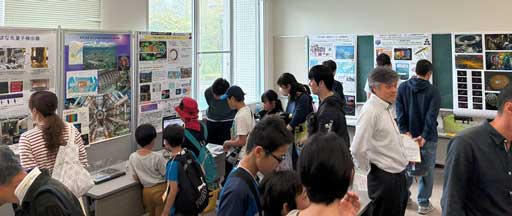
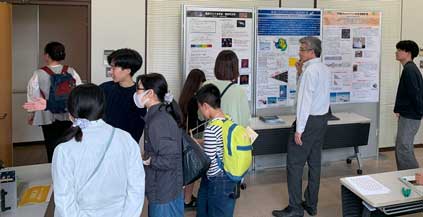
Contact: Prof. F. Ukegawa
- 2025/04/05 The 2025 Breakthrough Prize in Fundamental Physics was awarded to ATLAS and ALICE Collaborations
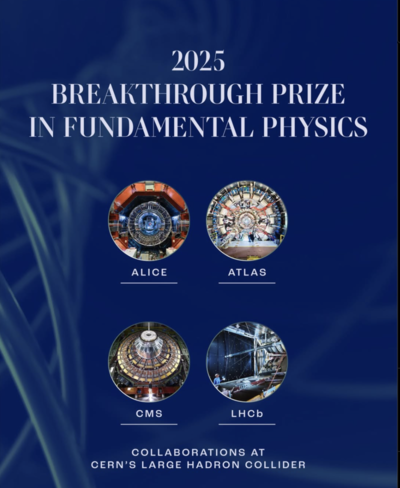
The 2025 Breakthrough Prize in Fundamental Physics was awarded co-authors of publications based on CERN’s Large Hadron Collider Run-2 data released between 2015 and July 15, 2024, at the experimental collaborations ATLAS, CMS, ALICE and LHCb. They carried out detailed measurements of Higgs boson properties confirming the symmetry-breaking mechanism of mass generation, the discovery of new strongly interacting particles, the study of rare processes and matter-antimatter asymmetry, and the exploration of nature at the shortest distances and most extreme conditions at CERN’s Large Hadron Collider.
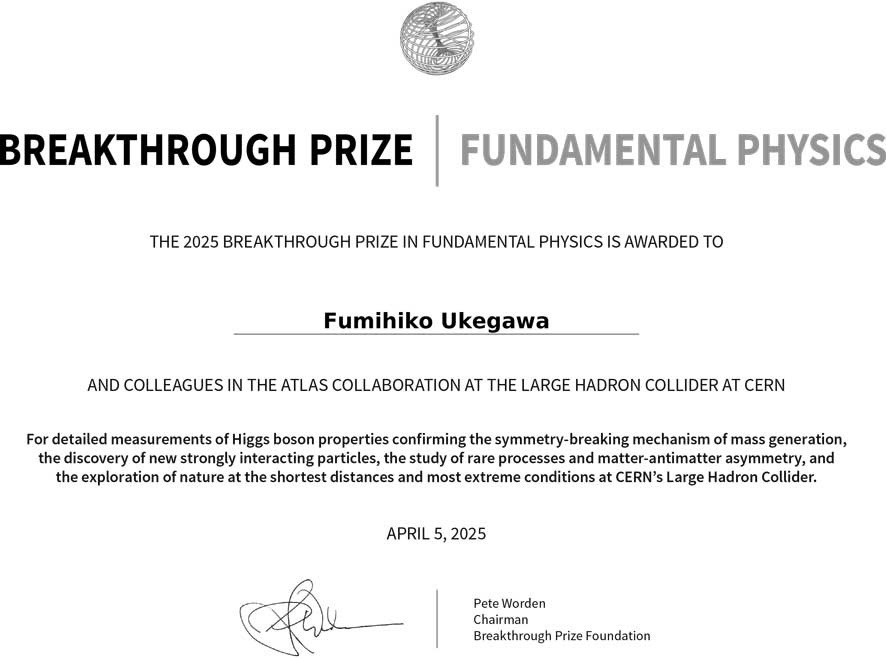
Members of the Division of Elementary Particles and the Division of Quark Nuclear Matters, TCHoU, have been deeply involved in the ATLAS and ALICE experiments, respectively, from their start-ups.
Visit also TSUKUBA JOURNAL, CERN news, ATLAS press statement, and ALICE announcement for more information.
- 2025/04 Member lists and pamphlets of the TCHoU have been updated.
- 2025/03/14 TCHoU Workshop by the Division of Elementary Particles
TCHoU Workshop of AY 2024 on Particle Physics, organized by the Division of Elementary Particles, is held as follows. This workshop is free to access. Talks are given in Japanese.
- Date: March 14 (Fri), 2025 13:30-15:35
- Venue: D312, Natural Sci. Bldg. D, Univ. Tsukuba
- Program:
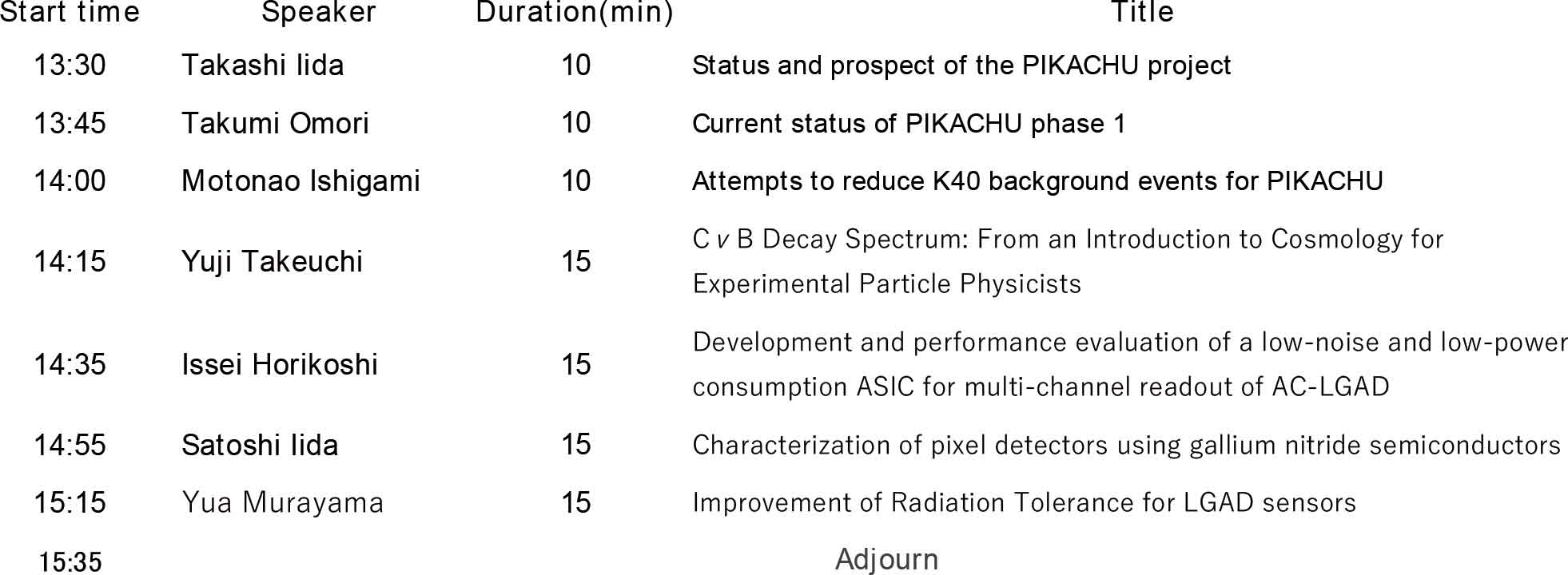
Contact: Asso.Prof. Y. Takeuchi
- 2025/03/08-09 International workshop "The 2nd Workshop Highly Baryonic Matter at RHIC-BES and Future Facilities"
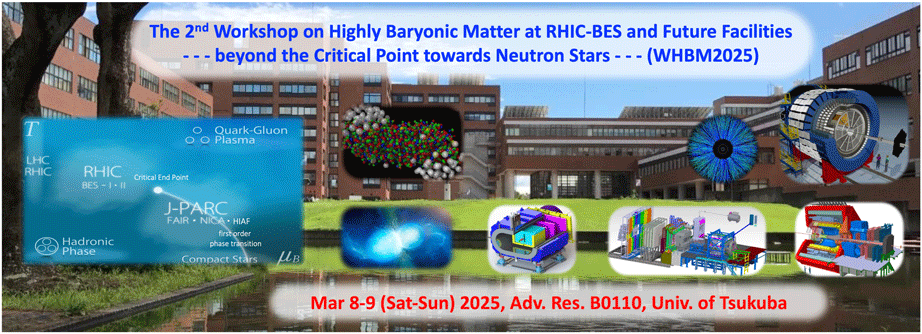
The 2nd Workshop on Highly Baryonic Matter at RHIC-BES and Future Facilities --- beyond the Critical Point towards Neutron Stars --- (WHBM2025) will be held at University of Tsukuba on March 8-9 (Sat-Sun), 2025 in order to discuss about our current understandings and future directions of researches on Quark Gluon Plasma (QGP) and QCD phase diagram, especially related to the first order phase transition and the critical end point, that are expected at high baryon density region in the phase diagram. The main topics to be discussed in the workshop would be on collective flow, vorticity, imaging, correlation, fluctuation and their experimental and theoretical challenges for clarifying the QCD phase structure and the high-density quark-nuclear matter from intermediate- to high-energy heavy-ion collisions in on-going programs at LHC and RHIC beam energy scan as well as future directions at FAIR, LHC/SPS, RHIC/AGS, HIAF and J-PARC etc.
Details of the workshop including the registration form can be found at the website below.
- Date: Mar. 08-09, 2025 (Sat-Sun) 8:30-17:30
- Venue: Advanced Research building-B, Room 0110, Univ. Tsukuba
- URL: https://kds.kek.jp/event/53510/ ( https://kds.kek.jp/e/whbm2025)
- You need to type in the access keyword that you see on the screen, to enter the web site.


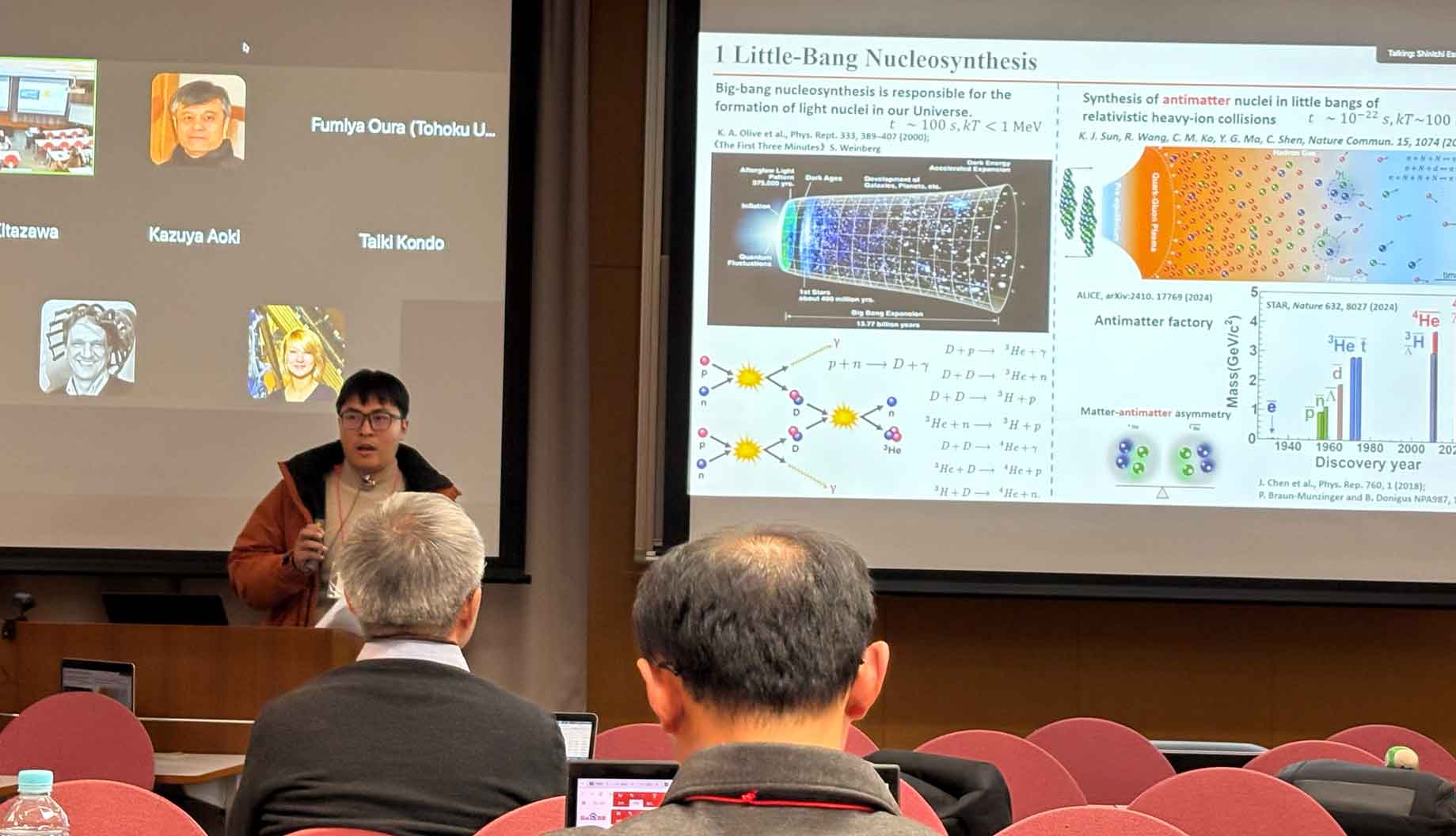
Contact: Prof. S. Esumi
- 2025/02/06 The astronomy project at Dome Fuji in Antarctica has finally begun!
The Division of Antarctic Astronomy is planning to install a 30cm submillimeter telescope at Dome Fuji inland of Antarctica to clarify the evolution process of interstellar gas in the Milky Way. This year, two members have joined the dome team and have begun preparations on-site. Next year, we will finally send the telescope to Antarctica.
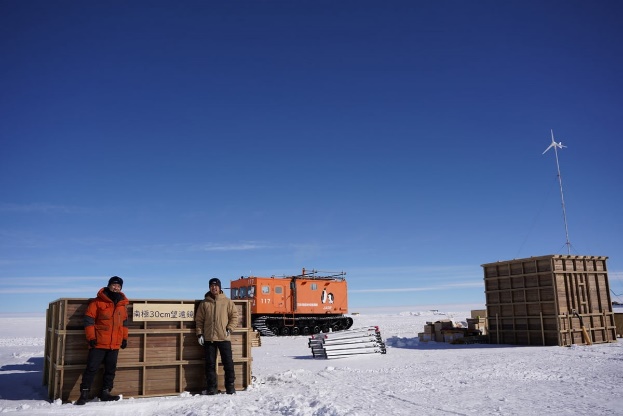 (photo by S.Honda)
(photo by S.Honda)Visit NIPR Research Team Blog https://nipr-blog.nipr.ac.jp/jare/20250128post-552.html (in Japanese) for more information.
- 2025/01/07 HoU seminar
- Date: Jan. 07, 2025 (Tue) 16:15-17:15
- Venue: B118, Natural Science Bldg. B, Univ. Tsukuba
- Speaker: Marco Bomben (APC & Université de Paris, Cité)
- Title: "TCAD simulations of silicon sensors for High Energy Physics"
- Technology computer-aided design (TCAD) simulations are a fundamental tool in the micro-electronics industry. TCAD tools allow to simulate both processed and device behaviour. TCAD simulations are crucial for the development of silicon sensors for high energy physics (HEP) too, allowing to reduce the number of submissions by studying in advance the performance of proposed layout and geometries of future detectors. In this talk I will present some highlights of my work on TCAD simulations, with focus on the possibility to have insight into quantities otherwise unaccessible like electric field and carrier concentration and velocity. I will also show how results from TCAD simulations can be used as input for more high-level MonteCarlo simulations.
Contact: Assi.Prof. S. Hirose
- Visit [Archive] for previous news and announcements.


